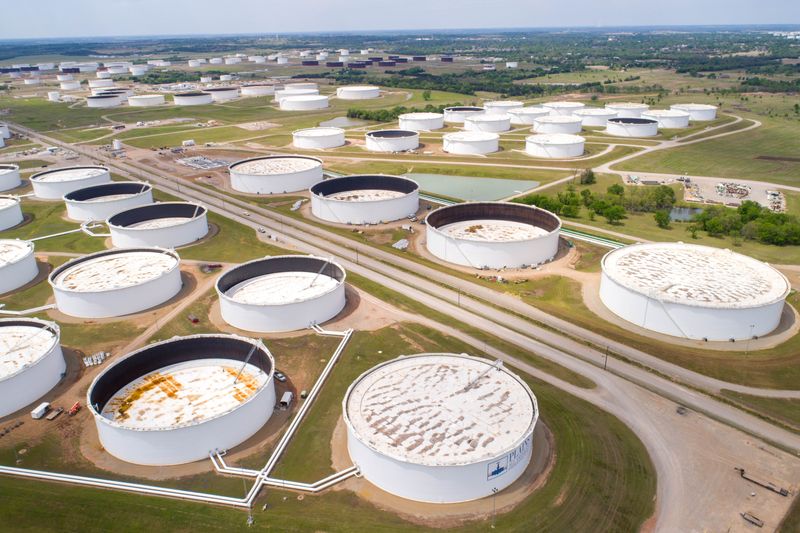By Arathy Somasekhar
HOUSTON (Reuters) -Oil prices ended nearly 1% lower on Tuesday, reversing earlier gains as U.S. consumer prices unexpectedly rose in August, giving cover for the U.S. Federal Reserve to deliver another hefty interest rate increase next week.
Brent crude for November delivery settled 83 cents lower at $93.17 a barrel with a 0.9% loss, after trading between $95.53 and $91.05. U.S. October crude futures closed down 47 cents, or 0.5%, at $87.31, after touching a high of $89.31 and low of $85.06.
The consumer price index gained 0.1% last month after being unchanged in July, the U.S. Labor Department said. Economists polled by Reuters had forecast a 0.1% fall.
Fed officials are set to meet next Tuesday and Wednesday, with inflation way above the U.S. central bank's 2% target.
"The Fed may have to raise rates quicker than expected which could cause a 'risk back off' sentiment in crude and further strength to the dollar," said Dennis Kissler, senior vice president of trading at BOK Financial.
Oil is generally priced in U.S. dollars, so a stronger greenback makes the commodity more expensive to holders of other currencies.
Renewed COVID-19 curbs in China, the world's second-largest oil consumer, also weighed on crude prices.
The number of trips taken over China's three-day Mid-Autumn Festival holiday shrank, with tourism revenue also falling, official data showed, as COVID-linked restrictions discouraged people from travelling.
Both contracts rose by more than $1.50 a barrel earlier in the session, supported by concerns over tighter inventories.
"The oil market's structural outlook remains one of tightness, but for now, this is offset by cyclical demand headwinds," Morgan Stanley (NYSE:MS) said in a note.
The U.S. Strategic Petroleum Reserve (SPR) fell 8.4 million barrels to 434.1 million barrels last week, the lowest since October 1984, according to government data on Monday.
The United States may begin refilling the SPR when crude prices fall below $80 per barrel, a Bloomberg reporter said on Twitter (NYSE:TWTR).
U.S. crude stocks rose by about 6 million barrels for the week ended Sept. 9, according to market sources citing American Petroleum Institute figures.
U.S. commercial oil stocks were forecast to have risen 800,000 barrels last week, analysts forecast in a Reuters poll.
The U.S. government will release inventory data at 10:30 a.m. EDT on Wednesday.
"We remain constructive on oil prices despite intensifying headwinds to demand, as the supply side remains supportive with slower-than-expected U.S. output growth and a proactive OPEC+," Amarpreet Singh, an energy analyst at Barclays (LON:BARC), wrote a note.

Prospects for a revival of the West's nuclear deal with Iran remained dim. Germany expressed regret on Monday that Tehran had not responded positively to European proposals to revive the 2015 agreement. U.S. Secretary of State Antony Blinken said an agreement would be unlikely in the near term.
The Organization of the Petroleum Exporting Countries on Tuesday stuck to its forecasts for robust global oil demand growth in 2022 and 2023, citing signs that major economies were faring better than expected despite headwinds such as surging inflation.